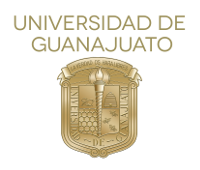Please use this identifier to cite or link to this item:
http://repositorio.ugto.mx/handle/20.500.12059/2952Full metadata record
| DC Field | Value | Language |
|---|---|---|
| dc.rights.license | http://creativecommons.org/licenses/by-nc-nd/4.0 | es_MX |
| dc.creator | MARIO ALBERTO IBARRA MANZANO | - |
| dc.date.accessioned | 2020-10-05T19:17:44Z | - |
| dc.date.available | 2020-10-05T19:17:44Z | - |
| dc.date.issued | 2016 | - |
| dc.identifier.uri | http://repositorio.ugto.mx/handle/20.500.12059/2952 | - |
| dc.description.abstract | La autonomía que se le puede dar a los robots es algo que depende en gran medida de la forma en la que el robot percibe su entorno, ya que debe responder a los estímulos que lo rodean, si sus mediciones son erróneas, las decisiones que tome en base a esas mediciones también lo estarán. El objetivo de este proyecto fue crear un modelo probabilístico del sensor de un robot basándonos en los errores que este tiene en diferentes posiciones y a diferentes distancias para crear mapas de ocupación. Después de varias pruebas, se encontró que para el robot utilizado, el mejor rango de ángulos está comprendido entre los ángulos de -24° a 24° con un tiempo de muestreo de 50 ms y una resolución de 3°. Al crear mapas con el modelo propuesto, se puede observar que se le da una tolerancia de error interpretada de las probabilidades y que esta se extiende a lo largo del contorno del objeto que funcionaba como obstáculo. Lo cual nos ayuda a disminuir el riesgo de colisión entre el obstáculo y nuestro robot durante las toma de decisiones del mismo. | es_MX |
| dc.language.iso | spa | es_MX |
| dc.publisher | Universidad de Guanajuato | es_MX |
| dc.relation | http://www.jovenesenlaciencia.ugto.mx/index.php/jovenesenlaciencia/article/view/1166 | - |
| dc.rights | info:eu-repo/semantics/openAccess | es_MX |
| dc.source | Jóvenes en la Ciencia: Verano de la Investigación Científica Vol. 2, No.1 (2016) | es_MX |
| dc.title | Construcción de Mapas de Ocupación para Robots de Servicio | es_MX |
| dc.type | info:eu-repo/semantics/article | es_MX |
| dc.creator.id | info:eu-repo/dai/mx/cvu/105633 | es_MX |
| dc.subject.cti | info:eu-repo/classification/cti/7 | es_MX |
| dc.subject.keywords | Confiabilidad | es_MX |
| dc.subject.keywords | LabVIEW | es_MX |
| dc.subject.keywords | Probabilidad | es_MX |
| dc.subject.keywords | Error | es_MX |
| dc.subject.keywords | Logaritmico | es_MX |
| dc.type.version | info:eu-repo/semantics/publishedVersion | es_MX |
| dc.creator.two | Cristian Rosario Estrivero Chávez | - |
| dc.description.abstractEnglish | The autonomy that can give to the robots is something that depends largely on how the robot perceives its environment, because he have to respond to the stimulus that surround it, if its measurements are wrong, the decisions based on these measurements also will be. The goal of this project was to create a probabilistic model of a robot sensor based on the errors that this has in different positions and at different distances to create maps of occupation. After several tests, it was found that for the robot used, the best rank of angles are between -24 ° to 24 ° with a time of 50 ms between measurement and a resolution of 3 °. By creating maps with the proposed model, we can see that it is given an error tolerance interpreted the odds and that extends along the contour of the object that functioned as an obstacle. This helps us to reduce the risk of collision between the obstacle and our robot during making decisions. | - |
| Appears in Collections: | Revista Jóvenes en la Ciencia | |
Files in This Item:
| File | Description | Size | Format | |
|---|---|---|---|---|
| Construcción de Mapas de Ocupación para Robots de Servicio.pdf | 622.04 kB | Adobe PDF | View/Open |
Items in DSpace are protected by copyright, with all rights reserved, unless otherwise indicated.

